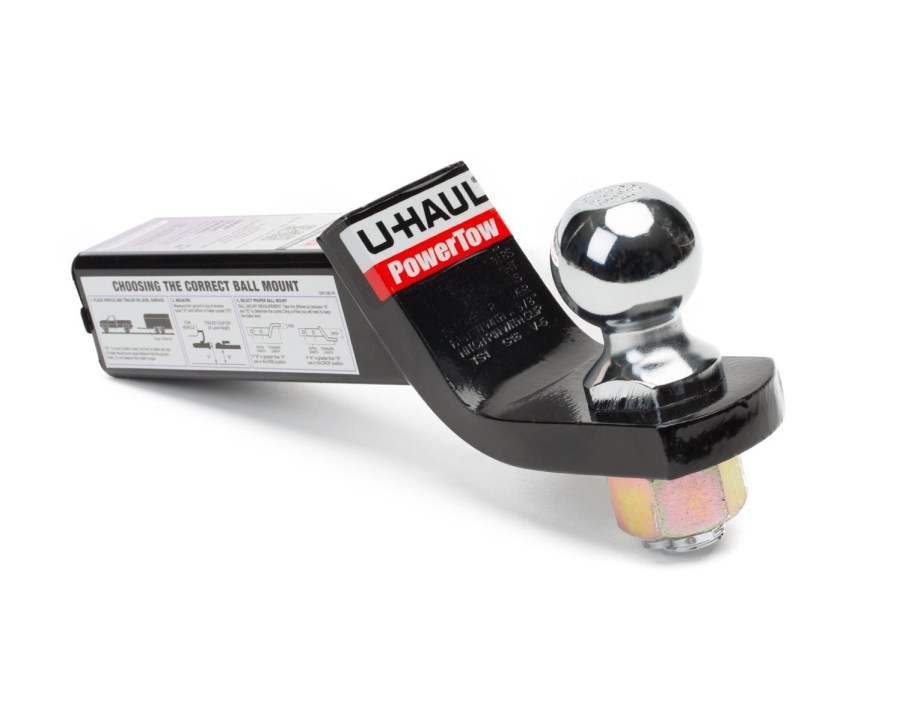
What Size Trailer Hitch Ball Do You Need?
Owning a recreational vehicle or boat can provide endless adventures, and having the right truck accessories will ensure a safe and pleasurable experience for years to come. There are many different types of trailer hitches to meet your towing needs. Long story short, look for a size on your trailer’s coupler (for example: 1-7/8-inch, 2-inch, or 2 and 5/16-inch). Then, buy the exact same size ball for your trailer hitch. Have multiple trailers? Don’t worry; trailer balls are easy to swap.
What is a ball hitch?

A towing system consists of the tow vehicle, the trailer, and the hitch that connects them. According to CURT, the trailer hitch is bolted onto the vehicle, providing a “coupling point to hook up the trailer.” The Lippert brand manufacturer explains, “When you think trailer hitch, you might picture what is referred to as a ball mount.” They note that a ball mount is “simply an accessory for a trailer hitch.”
A ball mount is the most common part of a towing system and is available in several sizes, with each type offering different towing capacity limits. The receiver hitch accessory includes a metal shank and a platform to connect the ball, providing a solid mounting point. The shank commonly has a hole for easy installation of a hitch pin or lock.
A ball hitch, according to CURT, “refers more specifically to a ball mount with a trailer ball already attached.” A loaded ball mount is a trailer ball that is “pre-torqued or welded into place.”
How to determine the proper size trailer hitch ball
The diameter of a trailer ball is measured to determine the accurate size needed for safe towing. The recreational vehicle industry utilizes four standard trailer ball sizes.
A 1-7/8-inch trailer ball is adequate for light-duty towing but can only handle up to 3,500 lbs. Gross Trailer Weight (GTW). When the trailer and tow vehicle are connected, the hitch transfers part of the weight for equal distribution. Adhering to towing limits is essential to prevent unnecessary damage.
A 2-inch trailer ball hitch is the industry standard because it is best suited for most class 3 trailer hitches. It can handle up to 12,000 lbs. GTW. CURT points out that there is not a universal trailer ball, so it is essential to make sure you select a ball that “best fits your coupler, ball mount, and weight requirements.”
A 2 5/16-inch trailer ball is mainly used for heavy-duty towing and can handle between 6,000 lbs. to 30,000 lbs. GTW. A 3-inch trailer ball is for gooseneck towing, commonly found on commercial semi-trucks.
To determine the best size trailer ball for your towing system, match the diameter of the ball to the measurements of the coupler. Next, make sure the shank fits the trailer ball hole. Finally, verify the towing capacity meets the weight specifications of your vehicle to ensure a safe connection.
How to measure a trailer hitch to ensure you get the right ball size
Most ball hitches will have the diameter size imprinted on the top of the ball. If you don’t see this, use a tape measure to check the exact dimensions. Also, measure the inside of the coupler. Both accessories should measure the actual same size. If not, the trailer can disconnect from the vehicle causing an unsafe towing condition.
Next, check the length of the shank, which is the bottom of the ball platform to the end of the threaded stem. Also, measure the diameter of the threaded stem to determine the rise, which is how high the trailer ball will sit when connected.
Since most travel trailers use a 2-inch coupler, that is the most common size ball hitch used. Verify the size requirements of your towing system before hitting the road to ensure a safe towing experience.
Next, find out why serious truck buyers don’t care about half-ton pickup truck towing capacities, or see the different types of trailer hitches in the video below:




